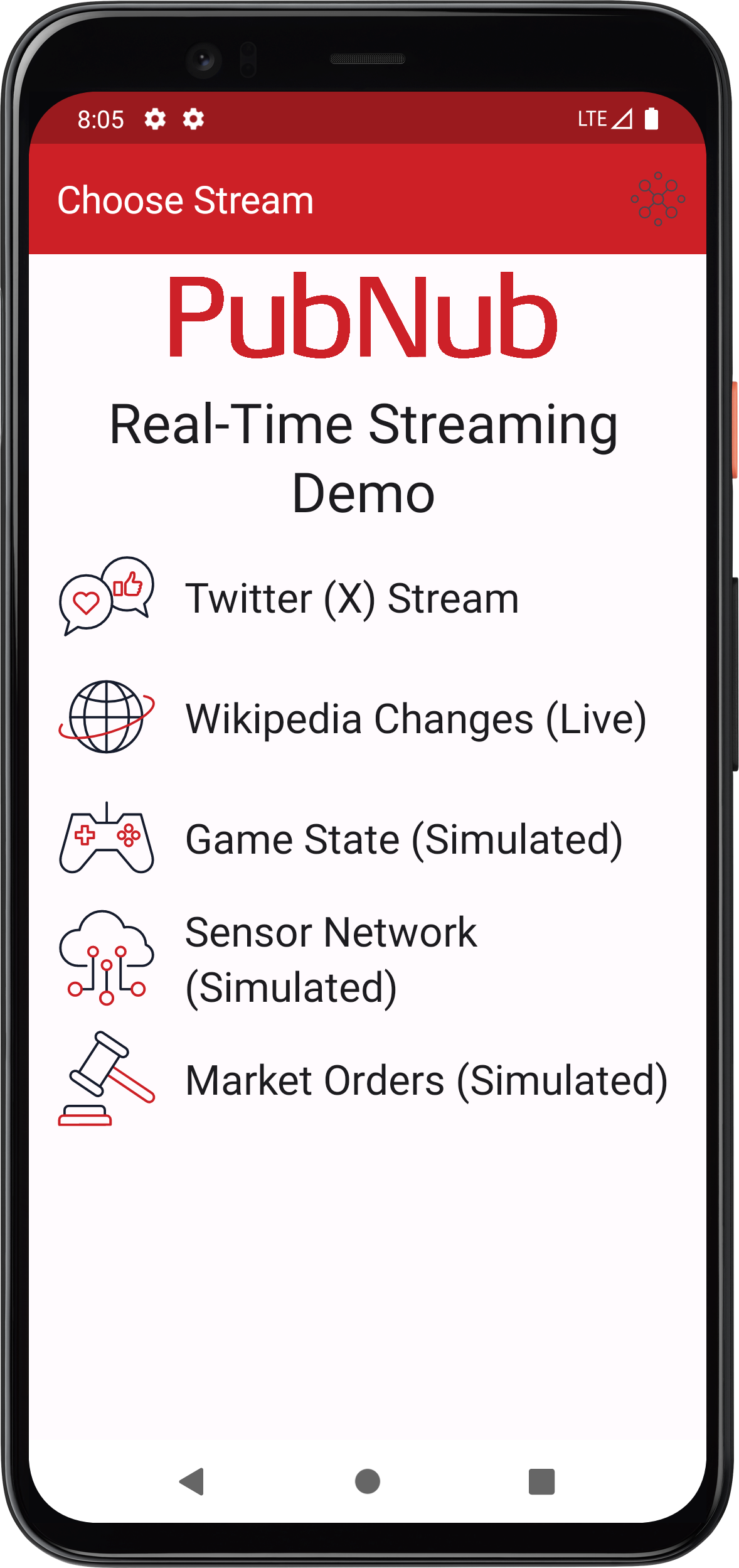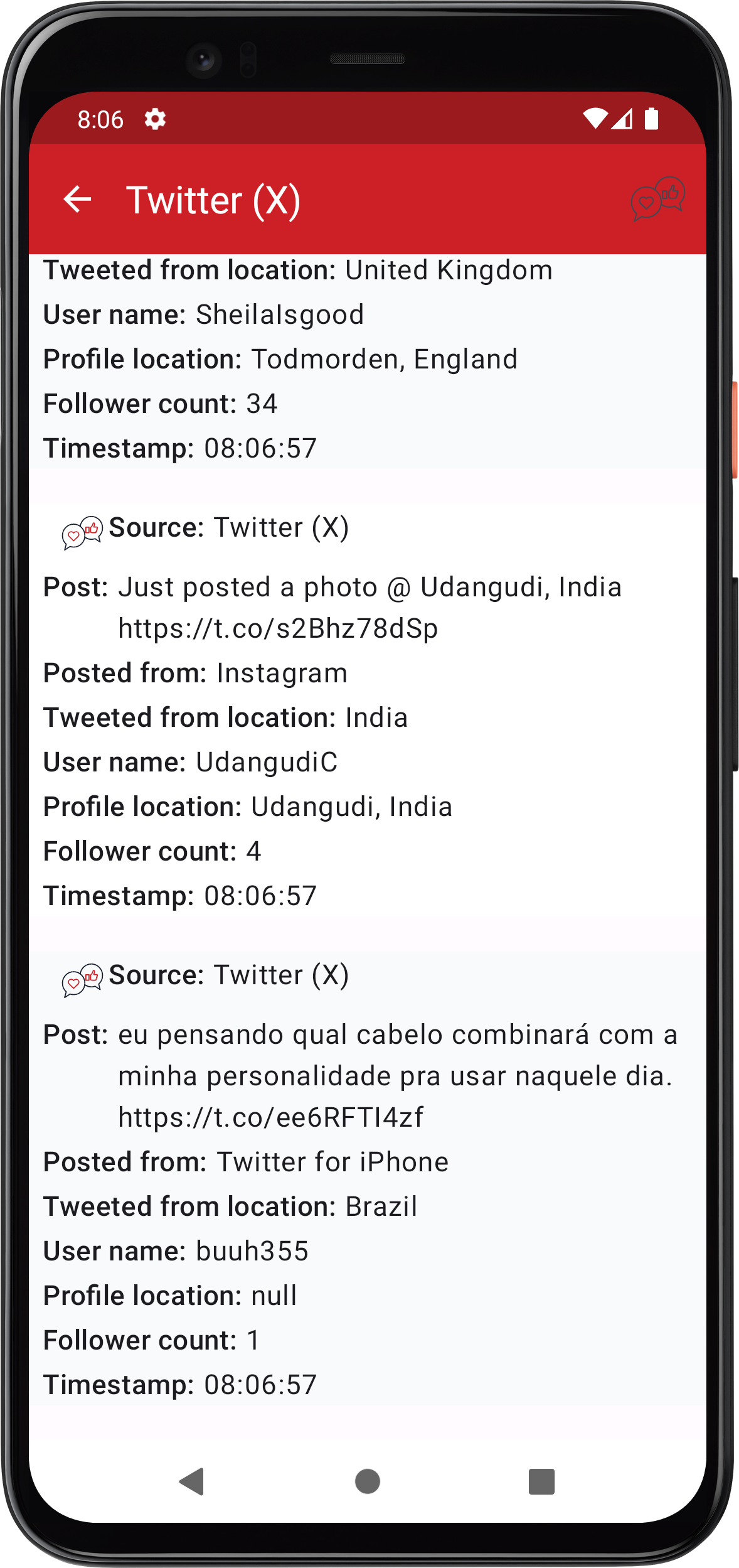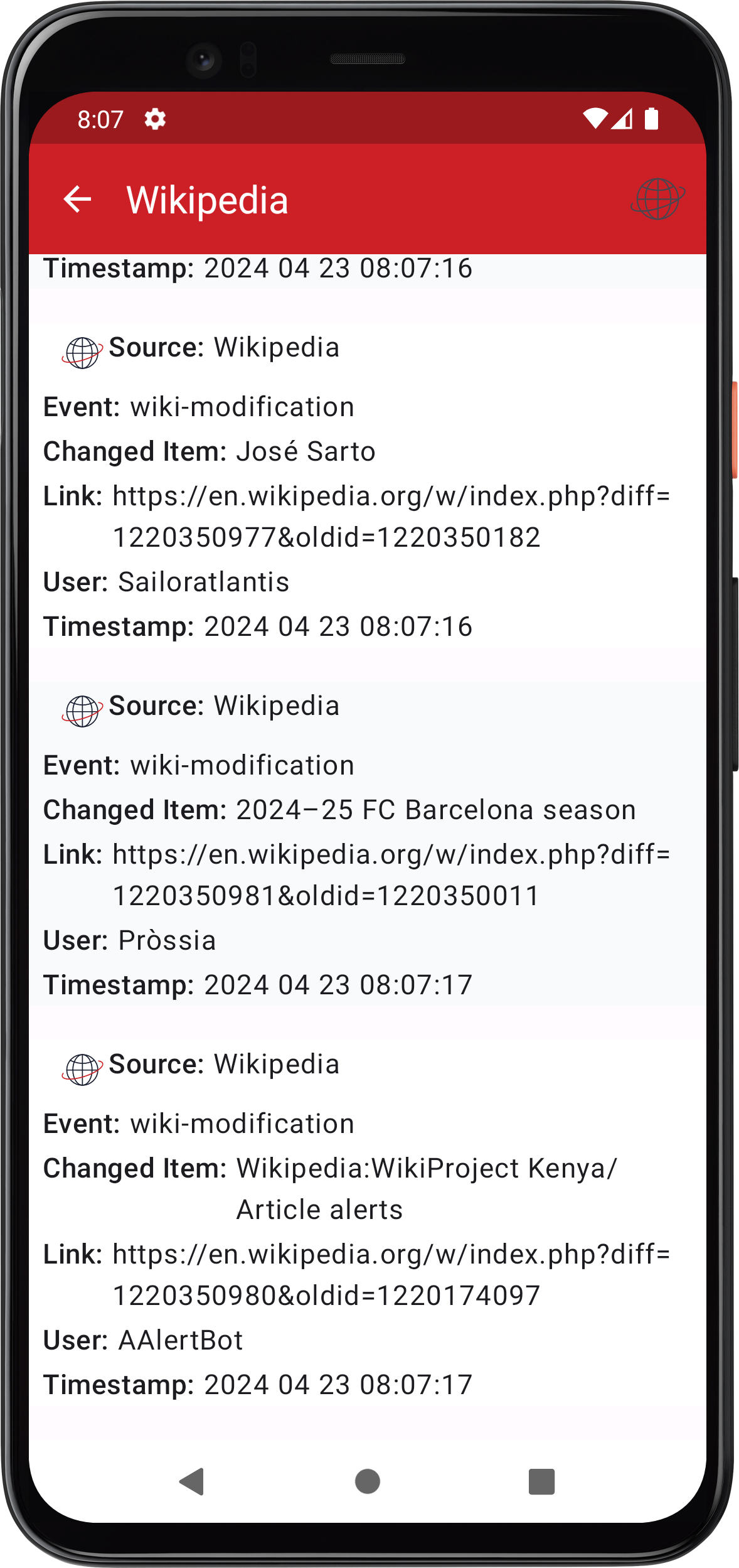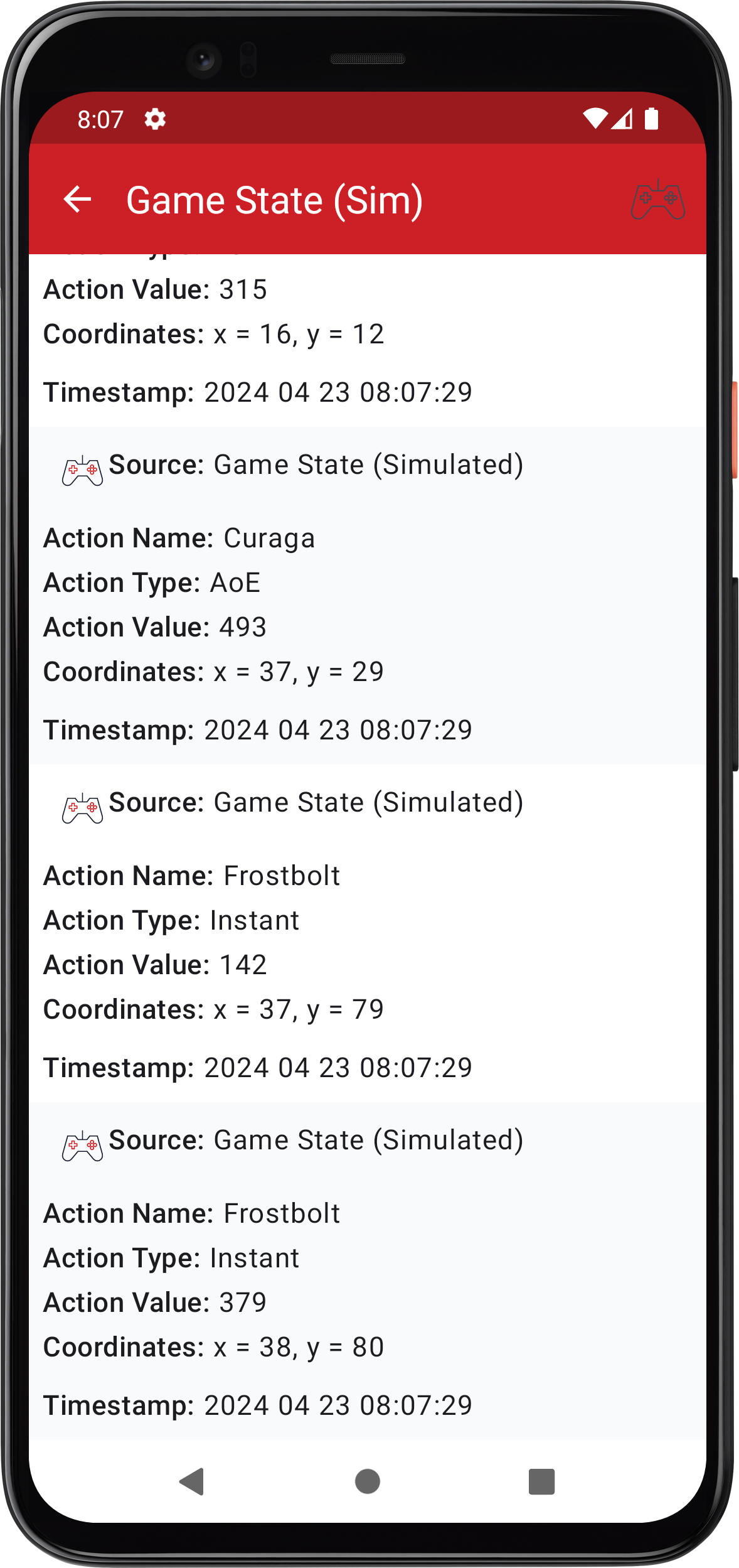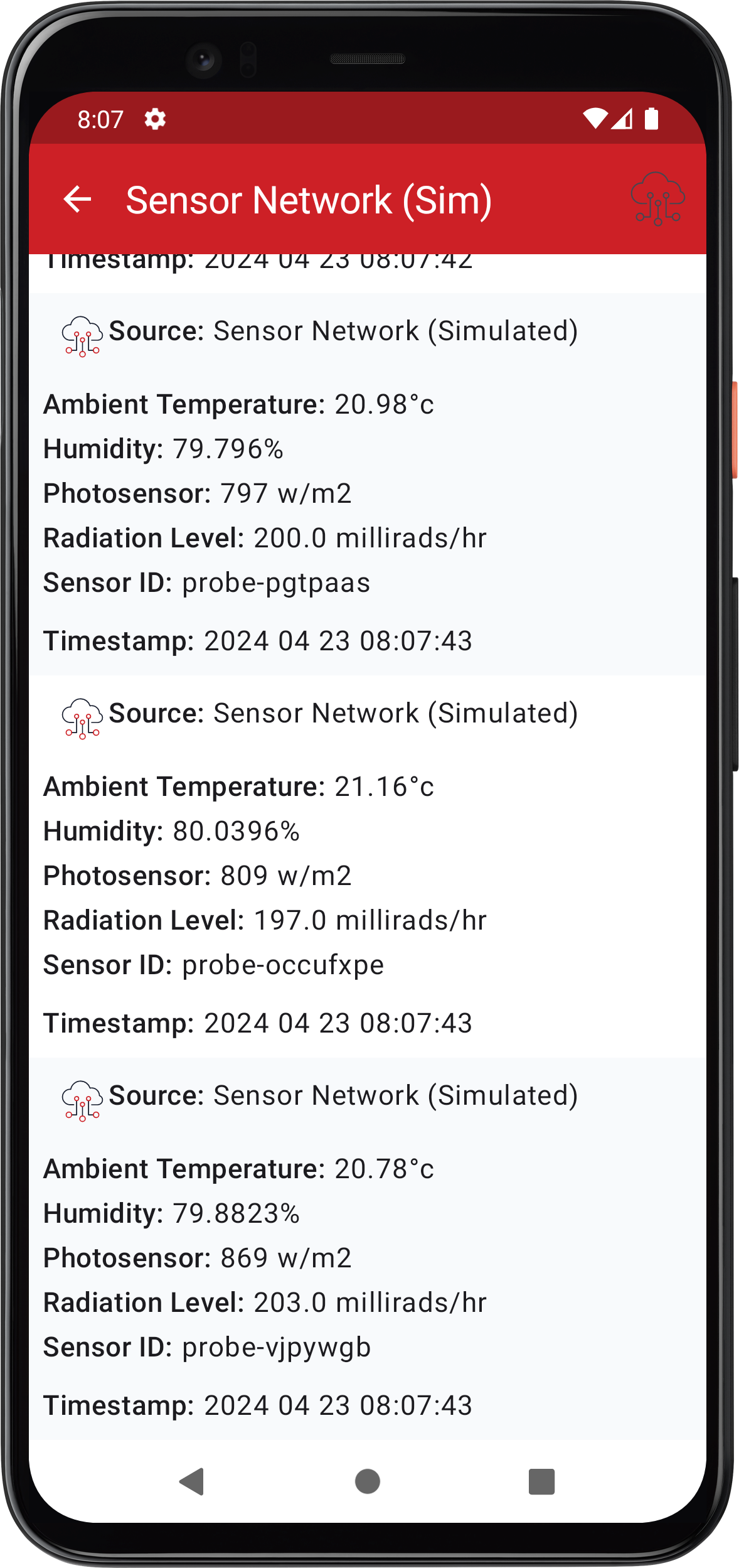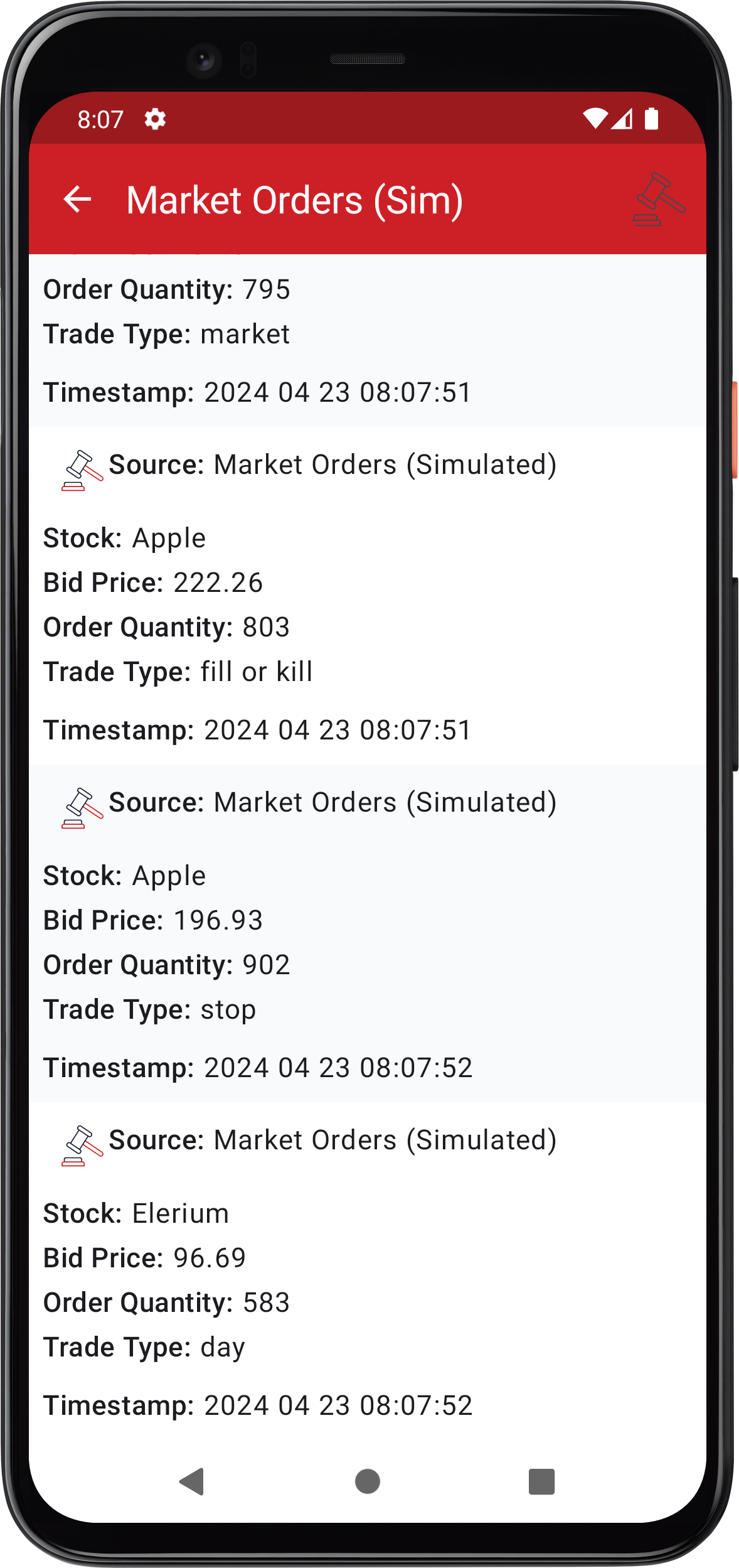PubNub makes it easy to connect and consume massive real time streaming data and deliver usable information to any number of subscribers. These "firehoses of data" could be weather reports, business metrics, stock quotes, tweets - really any source of data that is constantly changing and emitting updates. PubNub’s Network handles keeping both publishers and subscribers securely connected and ensuring that every piece of data is generally available in real time, so scale (or the amount of data you’re sending) is never an issue.
We’ve built sample realtime data streams to make it easy for you to prototype your streaming application. It is those sample data streams that are consumed by this demo app.
- Subscribe for real-time messages with the PubNub Kotlin SDK
To run this project yourself, simply clone this repository, open it in Android Studio and run it on your own device or emulator. You do not need your own Publish and Subscribe keys because you are only subscribing to existing data streams.
- Clone the Github repository
git clone https://github.com/PubNubDevelopers/Real-Time-Data-Streaming-Demo-Android.git
- Navigate to the application directory
cd Real-Time-Streaming-Demo-Android
- Open in Android Studio and build / run
Please fork the repository if you'd like to contribute. Pull requests are always welcome.
Checkout the following links for more information on developing chat solutions with PubNub:
- Tour of PubNub features: https://www.pubnub.com/tour/introduction/
- Data streaming with a web / JS app (demo): https://www.pubnub.com/demos/real-time-data-streaming/
- Data streaming with a web / JS app (source): https://github.com/PubNubDevelopers/Real-Time-Data-Streaming-Demo
